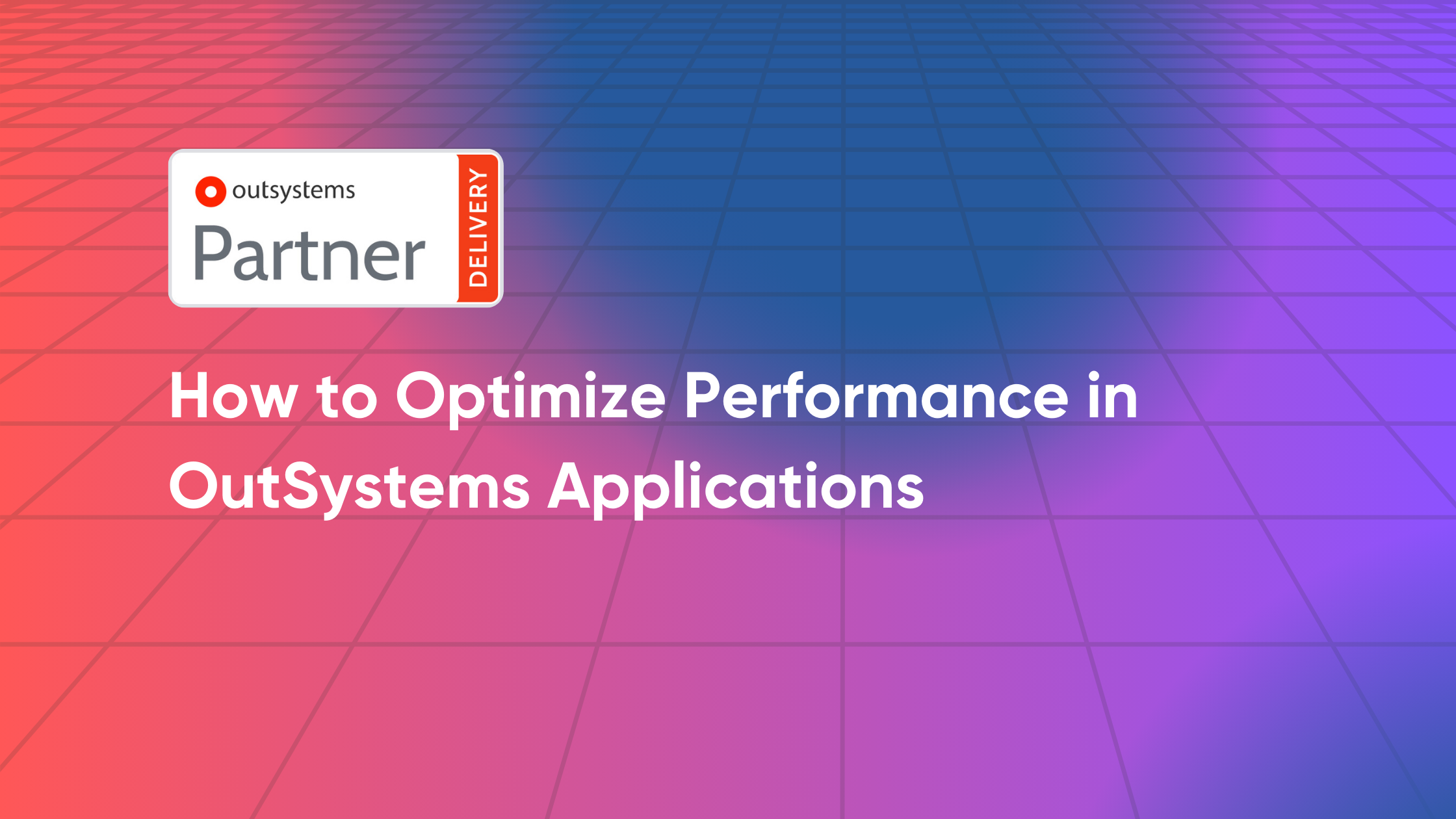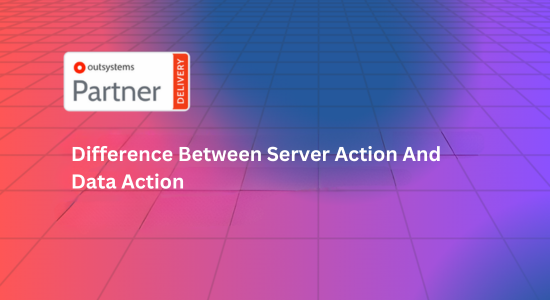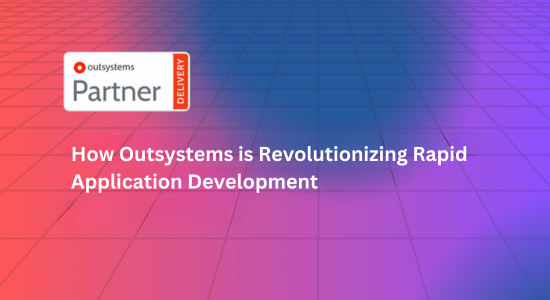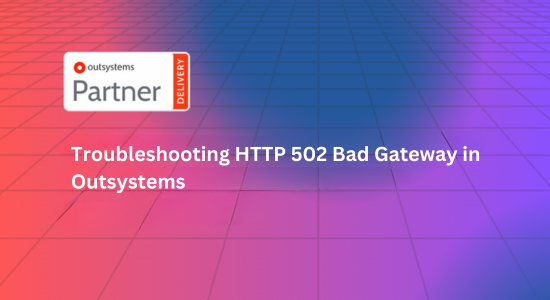In today’s fast-paced digital environment, application performance is crucial to user satisfaction and operational efficiency. OutSystems, a leading low-code platform, offers rapid development capabilities but requires attention to performance optimization to ensure scalable, high-performing applications. This blog delves into strategies and best practices for optimizing performance in OutSystems applications.
1. Understand OutSystems Architecture
Before diving into optimization techniques, it’s essential to grasp the fundamental architecture of OutSystems applications. OutSystems uses a multi-tier architecture consisting of:
- Client-side: The front-end where user interactions occur.
- Server-side: The back-end processing logic.
- Database layer: Where data is stored and managed.
Understanding these components helps in identifying performance bottlenecks and applying targeted optimization techniques.
2. Optimize Data Queries
Efficient data management is crucial for performance. OutSystems applications often involve complex queries that can impact performance if not handled correctly. Here are some tips for optimizing data queries:
a. Use Aggregates Wisely
Aggregates are OutSystems’ way of querying data. They are user-friendly but can be inefficient if overused or improperly configured. To optimize:
- Limit Data Retrieval: Use filters to retrieve only necessary data.
- Avoid Large Joins: Minimize the use of large joins which can slow down queries.
- Optimize Aggregate Logic: Ensure aggregate logic is as simple as possible to reduce processing time.
b. Leverage SQL Queries
For more complex data retrieval needs, use SQL queries. Custom SQL queries can be more efficient than aggregates for specific scenarios. However, they require a good understanding of SQL and database indexing.
c. Indexing
Ensure proper indexing on database tables. Indexes speed up data retrieval operations but can slow down write operations. Balance indexing based on read and write operations in your application.
3. Optimize Application Logic
The logic of your application directly impacts its performance. Here are several ways to optimize your application logic:
a. Reduce Server-Side Processing
Minimize server-side processing by:
- Using Client-Side Logic: Where feasible, move logic to the client side to reduce server load.
- Caching: Cache frequently accessed data to reduce repeated processing.
b. Efficient Use of Timers and Processes
Timers and background processes can be performance-intensive. Optimize them by:
- Scheduling Appropriately: Schedule background processes during off-peak hours.
- Minimizing Frequency: Reduce the frequency of timers if they run too often.
c. Optimize Business Processes
Review and streamline business processes. Simplify complex processes and ensure they are executed efficiently. Avoid redundant or unnecessary steps that can slow down application performance.
4. Improve User Interface (UI) Performance
The user interface plays a significant role in perceived performance. Enhance UI performance with these practices:
a. Optimize Load Times
- Minimize Resources: Reduce the number and size of resources (images, scripts) loaded on the UI.
- Asynchronous Loading: Use asynchronous loading for non-essential resources to speed up initial load times.
b. Efficient Data Display
- Paginate Large Data Sets: Use pagination or infinite scrolling for large data sets to avoid loading too much data at once.
- Lazy Loading: Implement lazy loading for images and other media to improve load times.
c. Streamline UI Elements
- Minimize DOM Elements: Reduce the number of elements in the DOM to improve rendering times.
- Optimize CSS and JavaScript: Use minified CSS and JavaScript files to reduce load times.
5. Monitor and Analyze Performance
Regular monitoring and analysis are key to maintaining optimal performance. Use OutSystems built-in tools and third-party solutions to track performance:
a. OutSystems Performance Dashboard
- Review Performance Metrics: Utilize OutSystems’ performance dashboard to review key metrics and identify bottlenecks.
- Analyze Logs: Examine logs for errors or warnings that might indicate performance issues.
b. Third-Party Monitoring Tools
- Integrate Monitoring Tools: Use third-party tools like New Relic or Datadog to gain deeper insights into application performance.
- Set Up Alerts: Configure alerts for performance thresholds to address issues proactively.
6. Optimize Deployment Strategies
Deployment can impact application performance. Optimize your deployment strategies to ensure smooth performance:
a. Environment Configuration
- Use Proper Environments: Configure different environments (development, staging, production) appropriately to avoid performance issues in production.
- Test Thoroughly: Conduct thorough testing in staging environments before deploying to production.
b. Automate Deployments
- Use CI/CD Pipelines: Implement continuous integration and continuous deployment (CI/CD) pipelines to streamline deployments and minimize errors.
- Monitor Post-Deployment: Monitor application performance post-deployment to quickly address any emerging issues.
7. Follow Best Practices
Adhering to best practices can significantly improve performance:
a. Regular Updates
- Keep Up with Updates: Regularly update your OutSystems platform and components to benefit from performance improvements and bug fixes.
b. Code Reviews
- Conduct Regular Code Reviews: Regularly review code to ensure adherence to best practices and identify potential performance issues early.
c. User Feedback
- Collect User Feedback: Gather feedback from users to identify areas of performance concern and address them promptly.
Conclusion
Optimizing performance in OutSystems applications involves a comprehensive approach, focusing on data management, application logic, UI enhancements, monitoring, deployment strategies, and best practices. By understanding and applying these strategies, you can enhance the efficiency and speed of your OutSystems applications, ensuring a better experience for your users and a more efficient application lifecycle.
Implementing these techniques requires a balance of technical expertise and practical application. Regular monitoring and iterative improvements will help maintain optimal performance as your applications evolve and grow.








